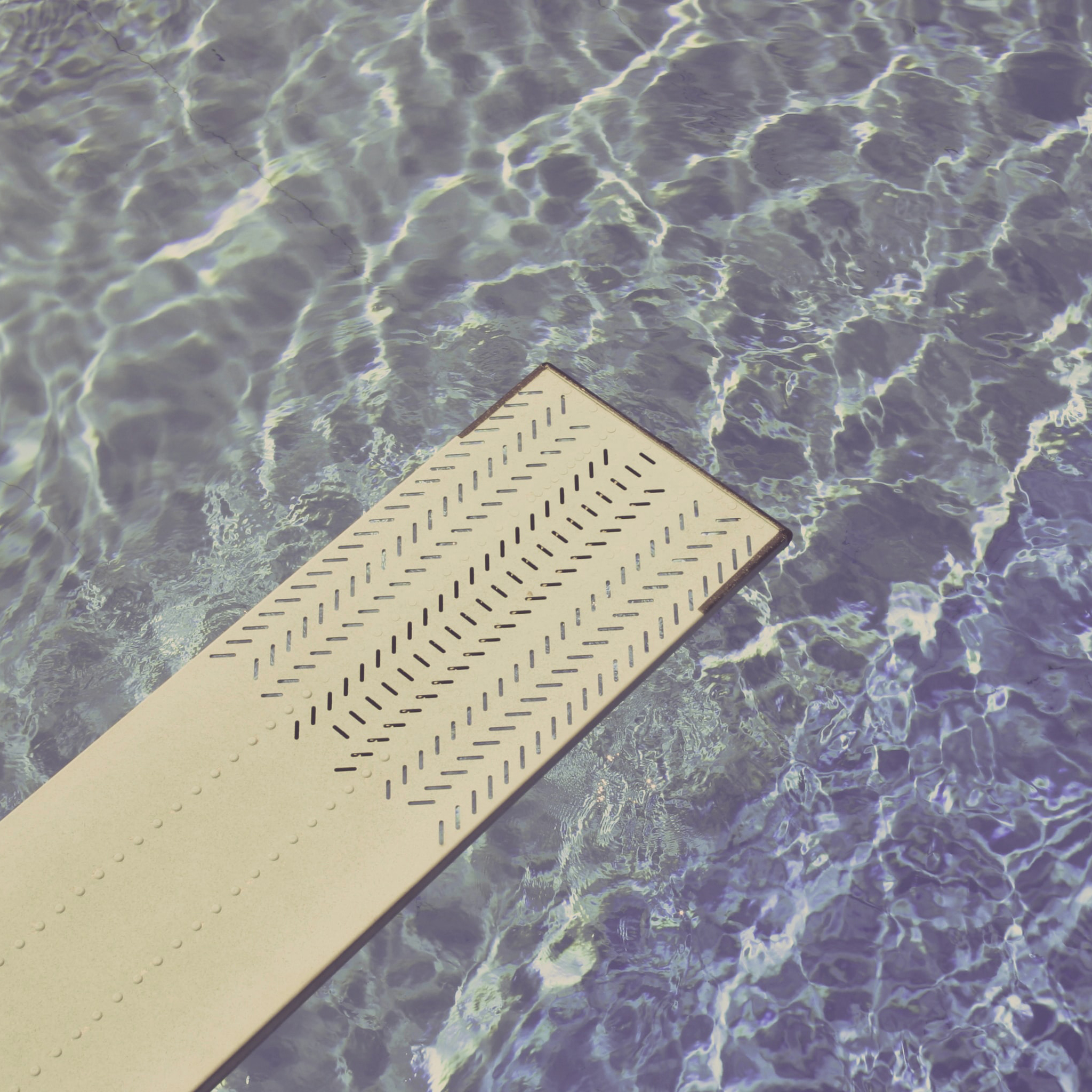
When I started getting into fountain pens about eight years ago, I was overwhelmed by the number of options. The world of fountain pens is full of different filing systems, nib sizes and grinds, barrel materials, and even after-market customizers who can turn your pen into something really special. Fountain pens can cost anywhere from $20 to nearly $50,000. And if you’re prepared to pay the kind of money necessary for a handmade pen from Japan, there are sometimes multi-year waiting lists.
Since I was new to this subject at the time, I found myself browsing online for various shopping guides. I simply wanted to know: “What’s the best fountain pen for my budget?” I needed someone to tell me what to buy.
When it comes to clothing, a subject where I have more footing, I really hate these sorts of guides. Clothing is so deeply tied to identity, taste, emotion, and lifestyle; no wardrobe will work for everyone. Such lists always send people down the wrong path, as they encourage them to buy things they don’t need. A few years ago, when I interviewed some stylish men about what they wear most, I was surprised to see that no one mentioned anything that can be described as an “essential.”
Yet, such lists can be helpful. Somewhere between being dictatorial and overly democratic, there’s a narrow space where you can guide someone towards better purchases. I’ve been thinking of this in terms of a “springboard wardrobe.”
A springboard wardrobe isn’t meant to be a forever wardrobe. It’s not about “Buying It For Life” or “Things Every Man Must Own.” It’s intended to give you a baseline that allows you to explore different aesthetics — a jumping-off point — so you can develop a personal sense of style. It’s possible to dress well by only ever wearing “springboard” items. At the same time, you can also use these items to explore different looks — from Italian tailoring to workwear to offbeat Japanese brands — so that you can get a better sense of what works for you.
The idea here is to build a certain baseline so that you can play around with different looks when you acquire something new. With fountain pens, I eventually found that I don’t like scratchy nibs (what some call feedback) or overly inky flex pens (wet noodles). However, to get to that place, you have to sample different things, sort of like tasting different dishes at a buffet. Here are some things that can help you build coherent outfits as you’re sampling around.
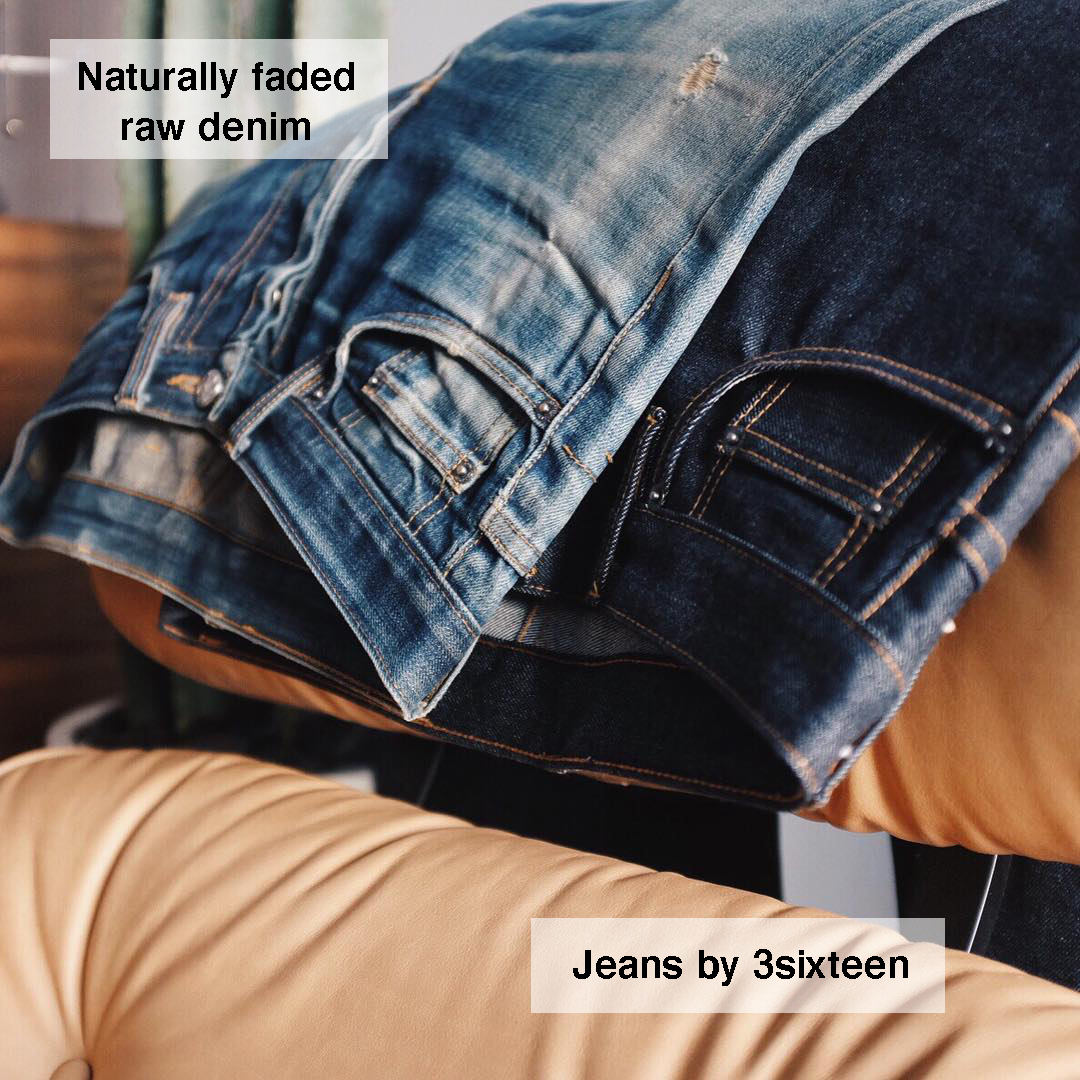
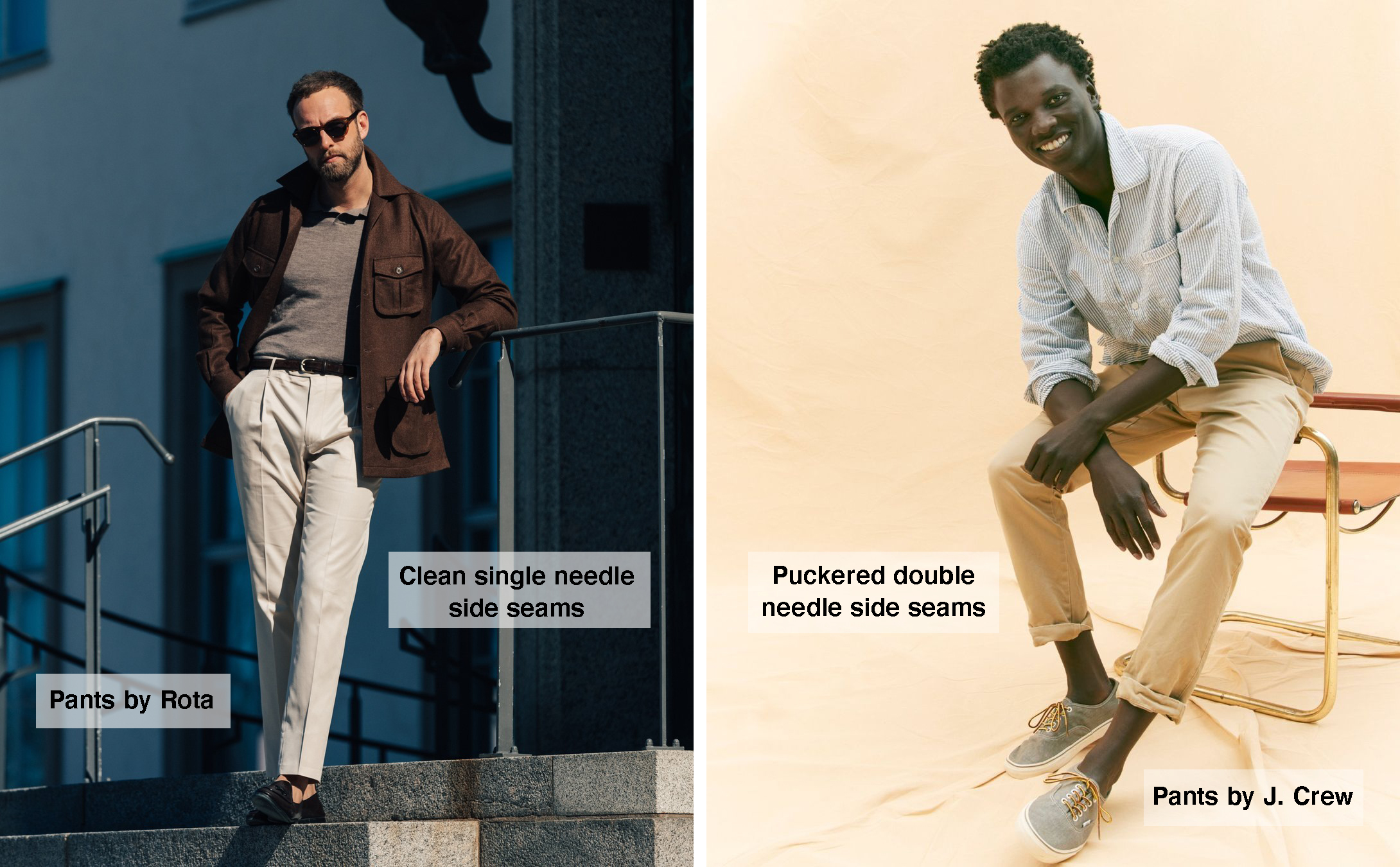
Tan Chinos or Blue Jeans
Most men are either a Chino Guy or Denim Guy, rarely both to equal degrees. Knowing where you fall can save you a bit of time and money when building a new wardrobe.
If your style leans rugged, get a pair of slim-straight jeans made from raw denim. The term raw simply means the fabric hasn’t been pre-washed or -distressed. Raw denim tends to be heavier and stiffer, and comes in a deeper, darker blue color than its washed counterparts. It also develops better and more authentic looking fades over time. You can wear raw denim jeans with almost anything that can be described as workwear or Americana: bomber jackets, trucker jackets, leather jackets, thick flannel shirts, oxford button-downs, and of course, t-shirts. Depending on the cut of your jeans and sport coats, you may even be able to dress them up with a tailored jacket (getting this combo right is tricky, but it can be done if you pay attention to some details).
On the other hand, if your style leans preppy, conservative, or refined, you may want to get chinos instead. There are three types of chinos: workwear, dressy, and what I like to call “knockaround.” For this guide, we’ll ignore workwear chinos. Dressy chinos are the cotton version of tailored trousers. They’re made with single needle side-seams, sit higher on the waist, and are designed to be worn with sport coats. You can find these from companies such as Rota or our sponsor Dapper Classics. Knockaround chinos, on the other hand, are the kind of pants you find at J. Crew. They have puckered double-needle side seams that make them look more casual. While it’s possible to wear these with sport coats, they’re often better kept to casualwear. Start with a basic chino color, such as stone or khaki. Darker chinos in colors such as gray or navy are not only harder to style, but they can look patchy over time, as cotton fades quickly and readily.
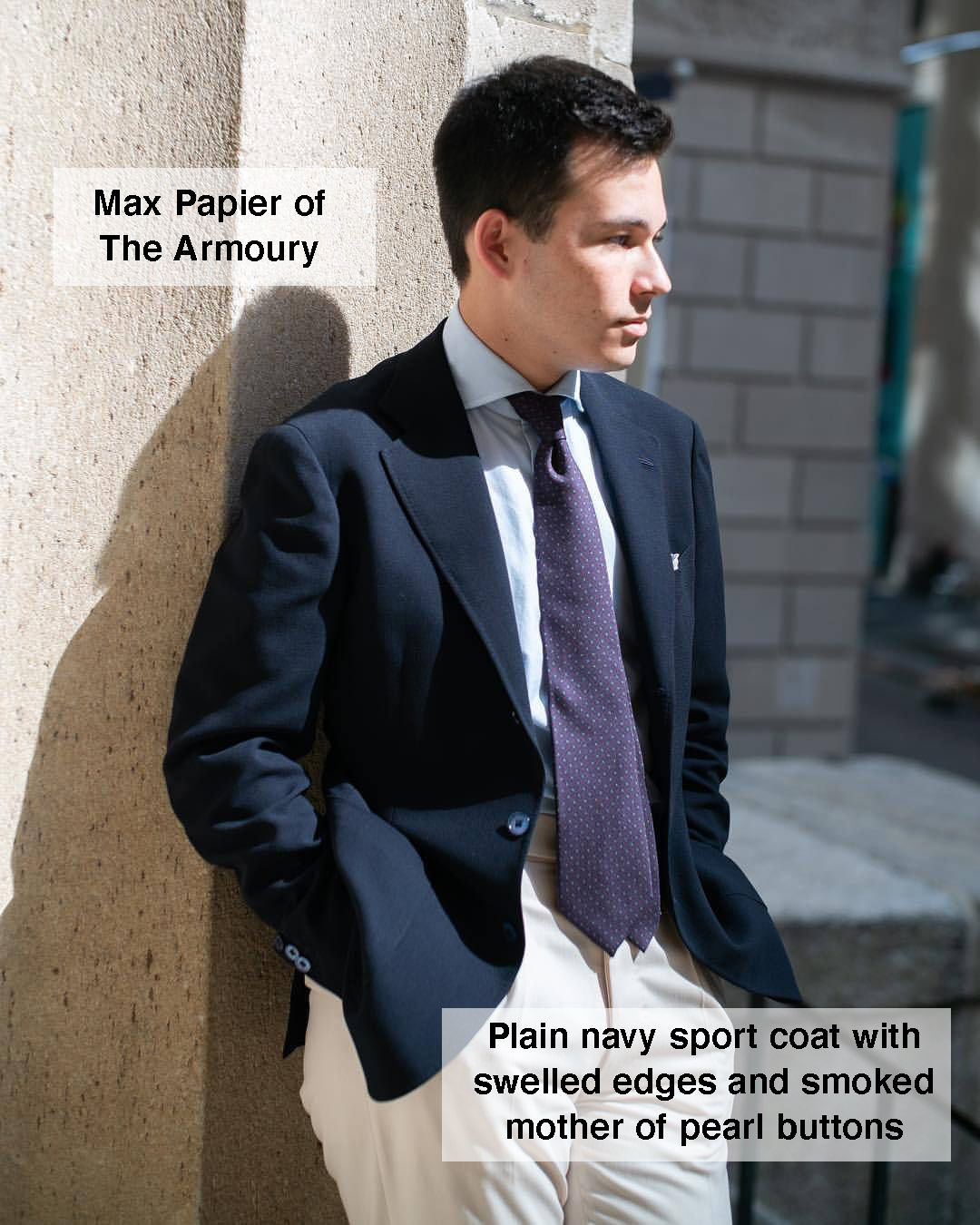
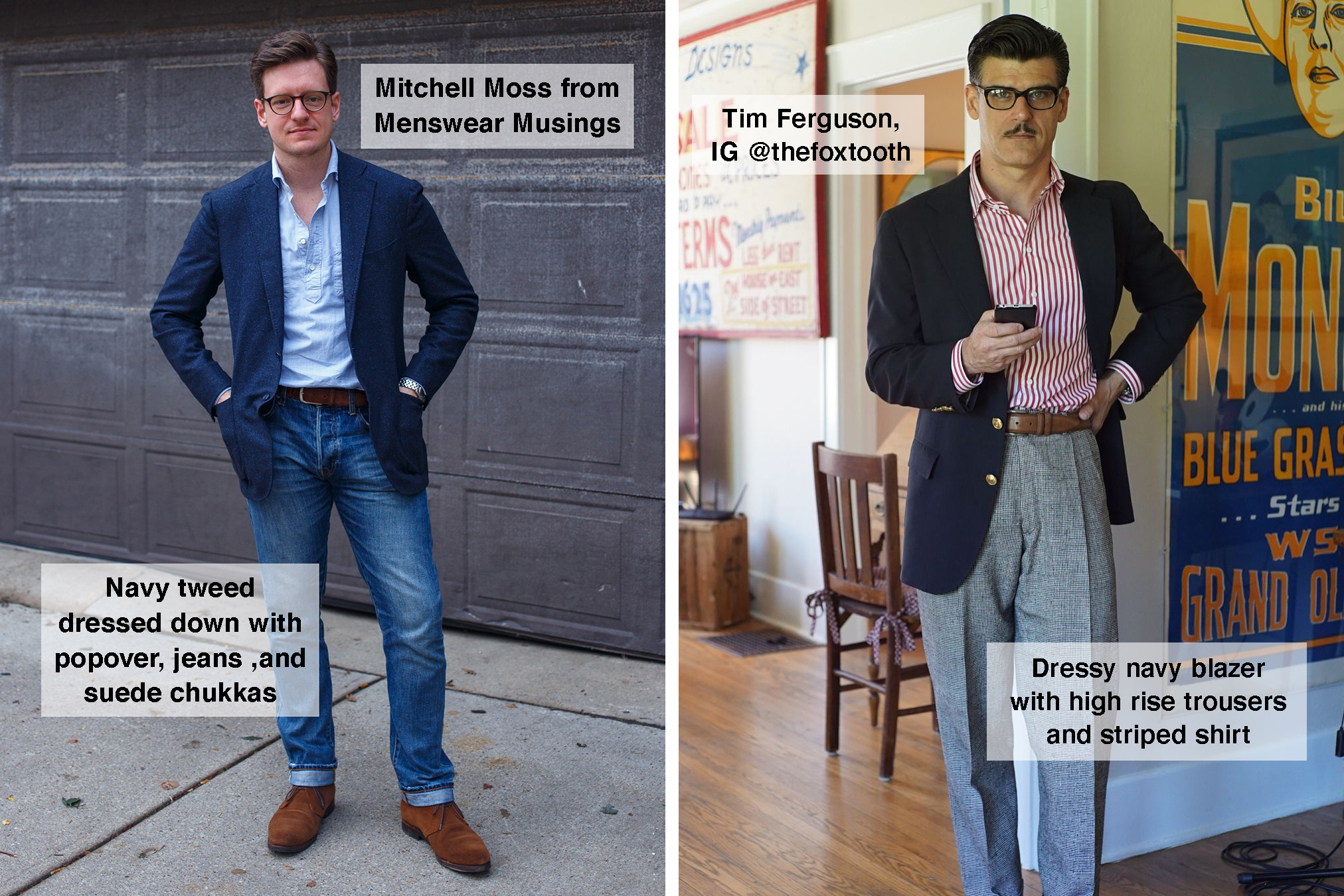
Navy Sport Coat
For most people, a suit is too formal for everyday occasions. If you’re interested in exploring tailored clothing, get a solid-colored, single-breasted navy sport coat instead. This is something you can dress up or down with a wide variety of things: tailored trousers or jeans, oxford button-downs or long-sleeved polos, leather shoes or plain white sneakers (stick to those that look like Common Projects Achilles). Depending on your environment, navy sport coats can almost disappear from view, which means you can wear them on consecutive days without anyone noticing. With brass buttons, such as you see on Tim above, it becomes a blazer. With any other kind of button, it’s just a plain navy sport coat. Most men will find the plain variety easier to wear, although a brass button blazer can look good if you’re willing to lean into a preppier or more traditional look.
Even if your style one day veers away from tailored clothing, a navy sport coat is the sort of thing you can wear to nice restaurants, important meetings, or on Mother’s Day. If you find you wear your navy sport coat often, you can get more: a brown wool-silk-linen or cream checked sport coat for summer; various tweeds for winter. But start with a navy sport coat, and you can see whether tailoring works for your lifestyle.
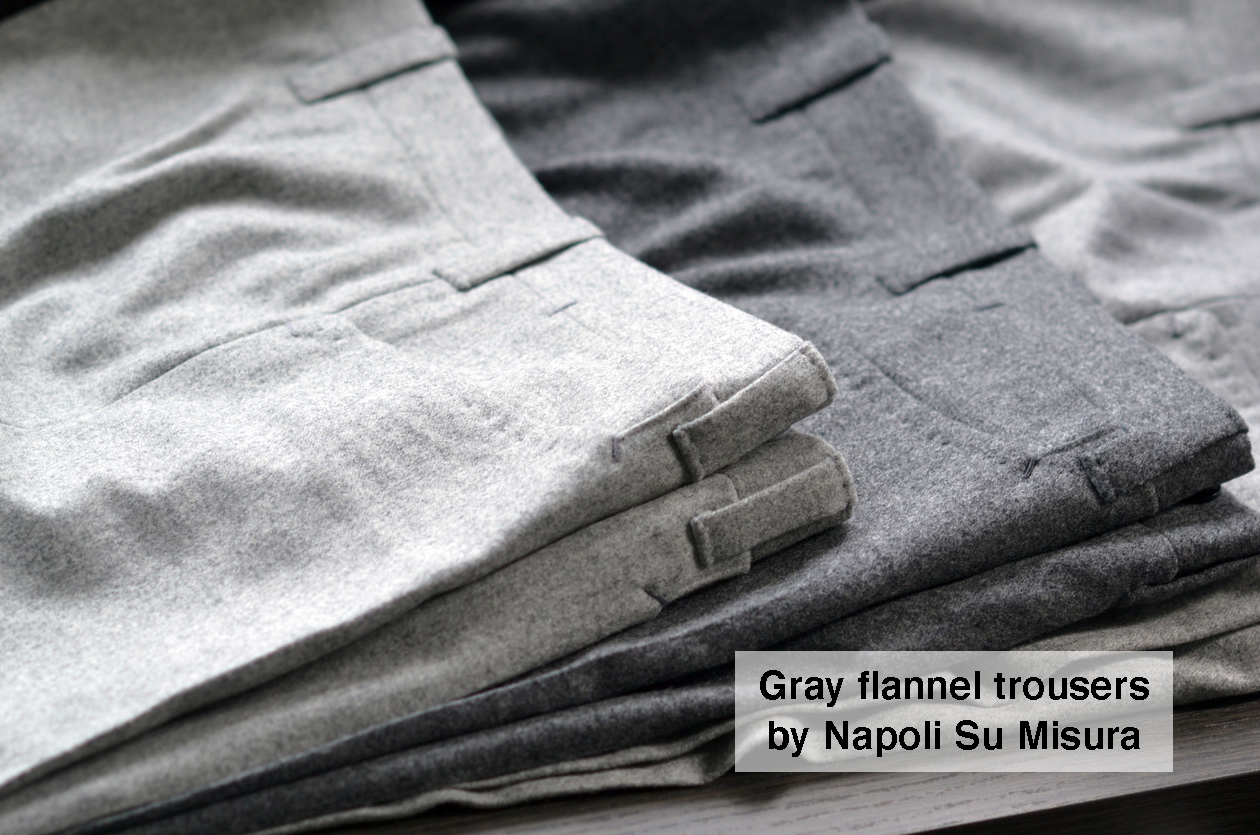
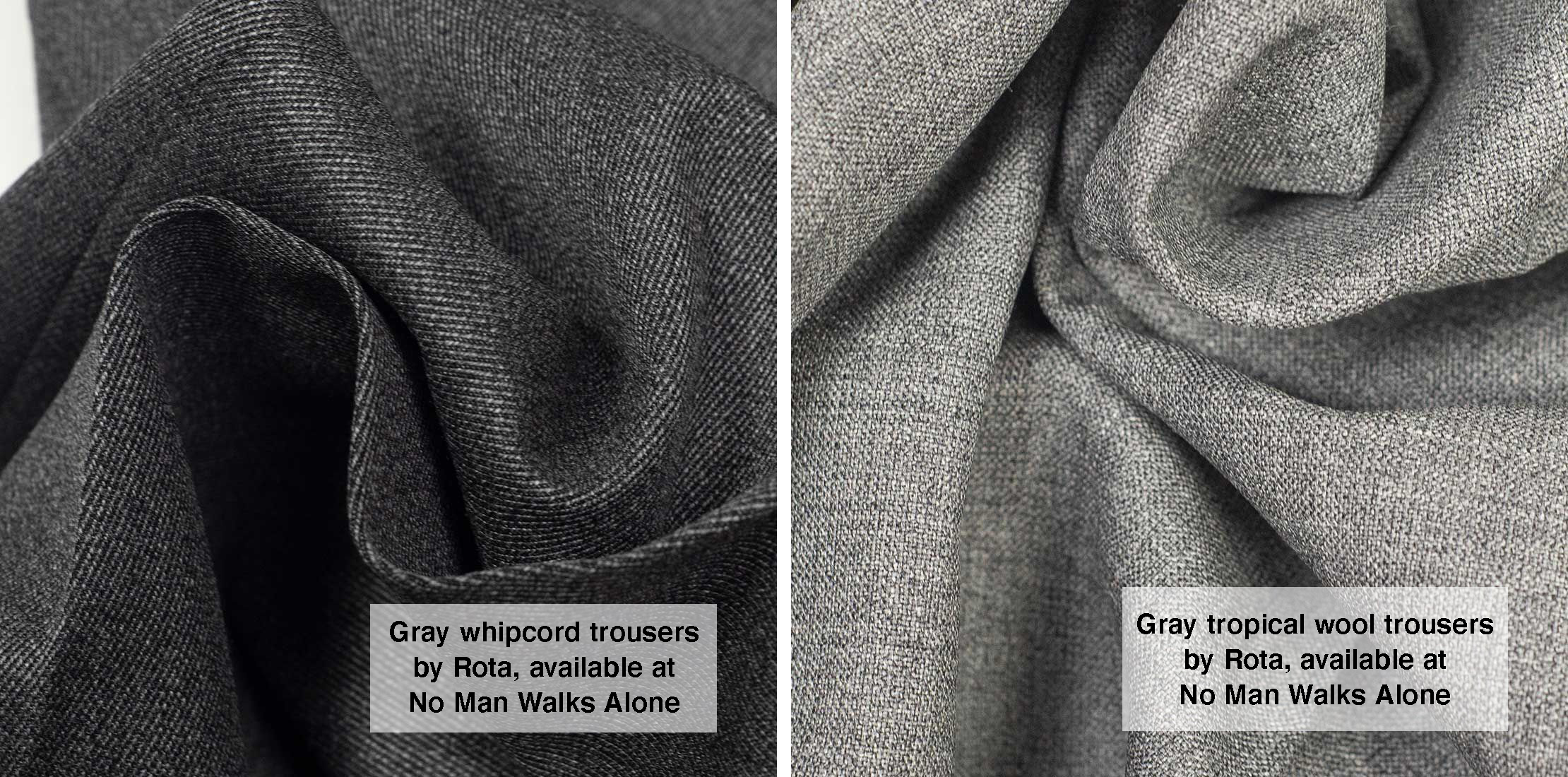
Gray Wool Trousers
If you have a navy sport coat in your wardrobe, you’ll obviously need some appropriate pants. Start with two or three pairs of gray trousers made from various weaves. Woolen flannel is excellent for winter; tropical wool has the breathability you’ll appreciate in summer. Mid- to light-gray works best, as charcoal doesn’t have enough contrast against dark-colored coats.
Like navy sport coats, gray pants are the sort of thing that almost disappear from view. You can wear them with sport coats in brown, olive, navy, and even citrusy colors. Gray trousers are so versatile, some say that you should never buy a sport coat that can’t be worn with them (I wouldn’t go that far, but this advice underscores the importance of having a solid rotation of gray pants). If you find that you wear gray tailored trousers often, expand into brown — tan cavalry twill and mid-brown whipcord for winter; sandy tropical wool for summer. Most men have more brown sport coats than gray, and it takes a bit of careful coordination to pair tan pants with a brown sport coat. This is why gray should be your first two or three purchases. But brown trousers are also versatile and will lend something different to a wardrobe that’s already full of gray pants.
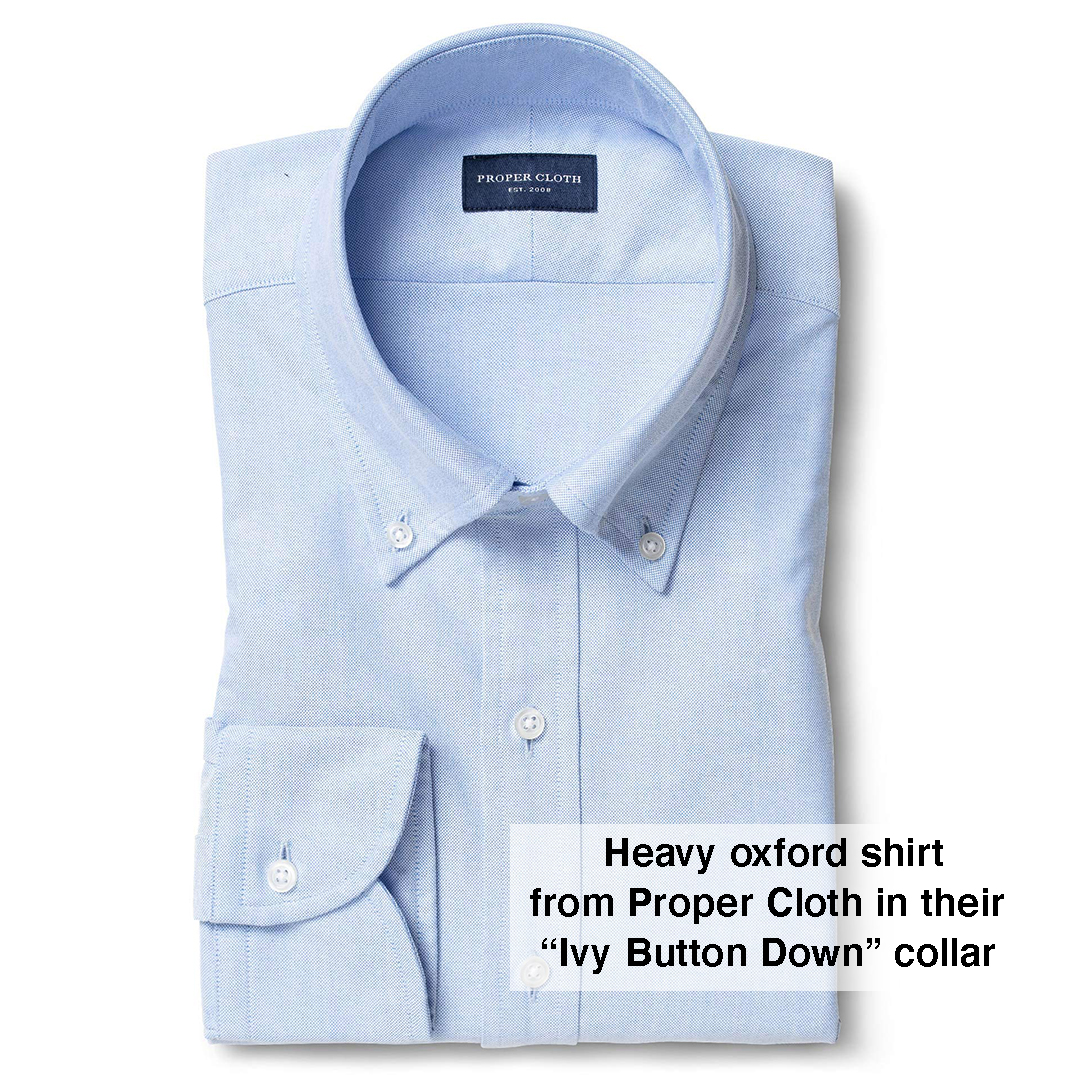
Oxford Cloth Button Down
Men who are just starting to build a better wardrobe often make the mistake of thinking they should get a pile of white dress shirts and things in different colors for when they want to be more expressive. The truth is, white dress shirts aren’t the blank slate that people assume. They go wonderfully with suits, and in the right cloth (oxford or linen), they can be worn with slightly more casual attire. However, unless you wear suits on a regular basis, you’re better off with light blue shirts (maybe add some blue and white stripes down the road). For experimentation, I think oxford cloth is best.
Since oxford button-downs have such a long history in American style, you can wear them cohesively with everything from tailored clothing to workwear to prep. As a color, light blue looks more causal than stark white, which helps it span a wider range of things in today’s casual world. You can wear light blue oxford button-downs with everything from sport coats to olive field jackets.
If your style stays traditional and tailored, you’ll always be able to wear light blue oxford button-downs with your sport coats and suits. If you end up wearing offbeat Japanese workwear brands such as Engineered Garments, you can still wear oxford button-downs with casual jackets. Like other items on this list, light blue oxford button-downs have a certain kind of versatility that allows you to play around with different looks.
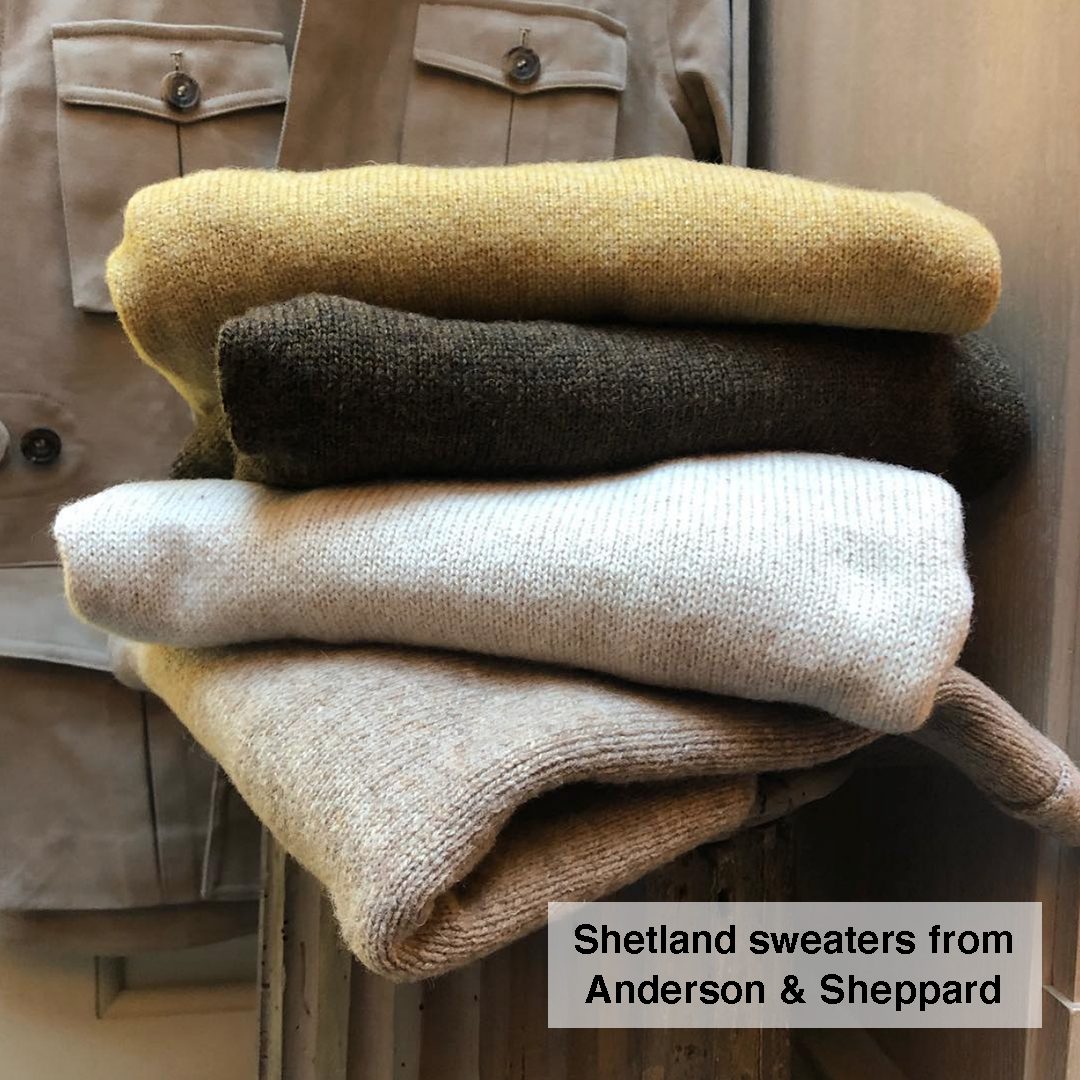
Shetland Sweaters
They’ve been a staple at Brooks Brothers for over a hundred years, but you’d be surprised at how often Shetland sweaters crop up in almost every other line (trad or otherwise). Shetland knits have been part of Aspesi’s military-inspired collections, Lemaire’s contemporary wear, Margaret Howell’s rustic British designs, Our Legacy’s minimalism, NN07’s Japanese basics, and so forth. Dries Van Noten even made a line of Shetland sweaters a few years ago with archival labels from famous British mills. Shetlands work just as well with oversized topcoats as they do with waxed cotton Barbours, slim tailored trousers or raw denim jeans, experimental outfits or stalwart classics. Their spongey texture lends visual interest to outfits, while their solid color makes them easy to wear. Aside from gray sweatshirts, few knitwear styles stretch across so many aesthetic spaces.
Shetlands also offer more bang for your buck, which is useful early on in this process since you likely have to buy many things. As a fiber, Shetland wool is hardy and durable, so it doesn’t easily pill. You can often find vintage Shetlands on eBay that look like they’ve never been worn. Plus, whereas top-end cashmere sweaters start at $400, a good Shetland tops out at around $150. Get one in a color that contrasts with the pants you wear most. If you mostly wear gray wool trousers, get a sweater in brown, olive, or navy. If you mostly wear blue jeans, then buy a Shetland in gray, beige, or brown. By choosing a contrasting color, you can easily grab your sweater in the morning without second-guessing your outfit.
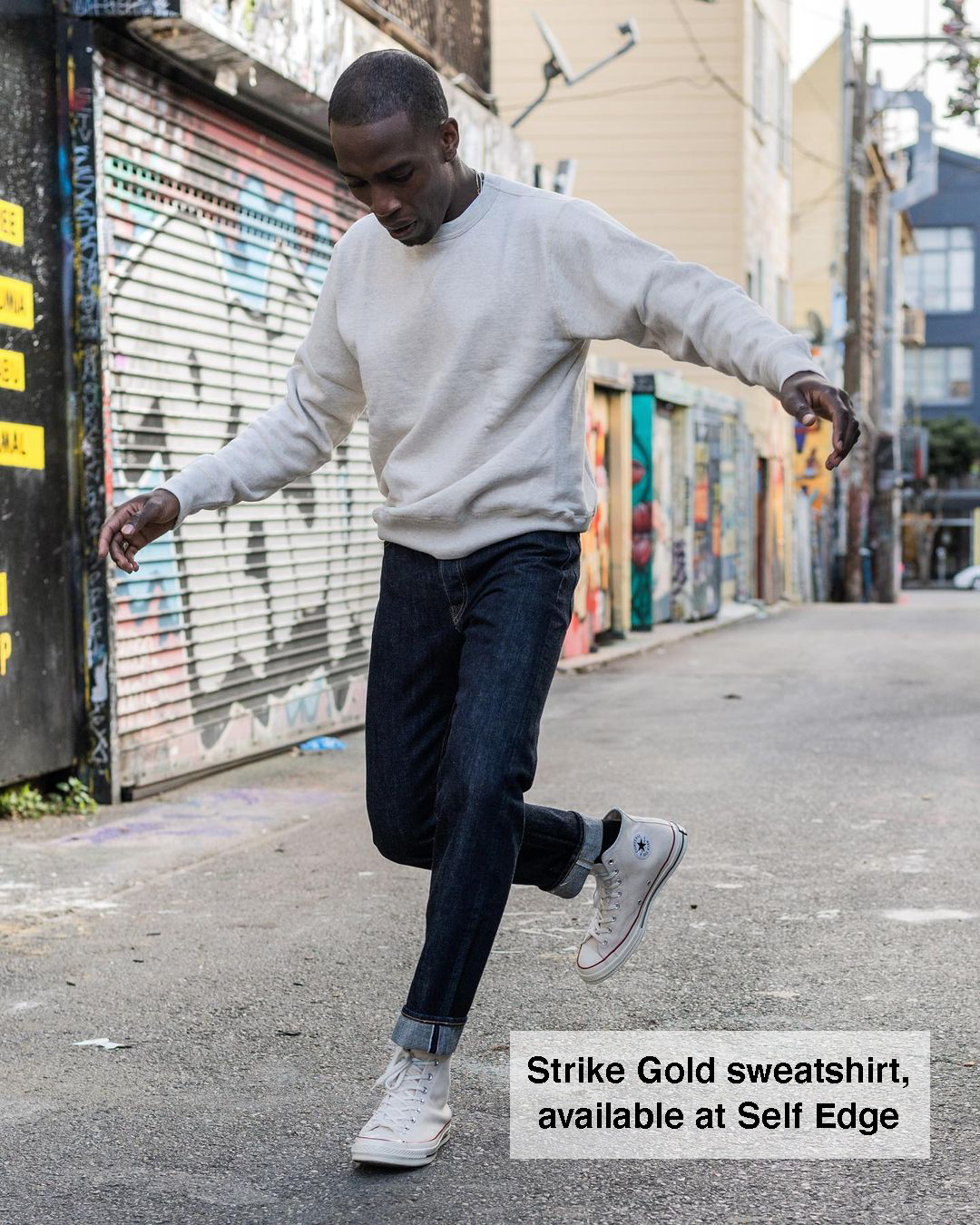
Gray Sweatshirt
A sturdy cotton sweatshirt is your workhorse knit. You can wear cotton sweatshirts with olive field jackets, brown leather jackets, and blue chore coats. Like oxford button-downs, they have such a long tradition in almost every casual aesthetic, you can wear them without thinking. I like ones with the triangular guest at the neck — sometimes called The Dorito because of its shape — but it’s purely an aesthetic preference. Heathered gray is your most versatile color, but black works surprisingly well too.
Prices here can range from the basic to ultra-expensive. If you’re on a budget, focus your money on the parts of your wardrobe that will make the most impact, such as outerwear and shoes. A cheaper sweatshirt from J. Crew will work out just fine. If it ends up stretching out, you can throw it into the wash and then the dryer. Cotton fades in the dryer, but this can look charming in a sweatshirt (and in a color such as heather gray, nearly undetectable).
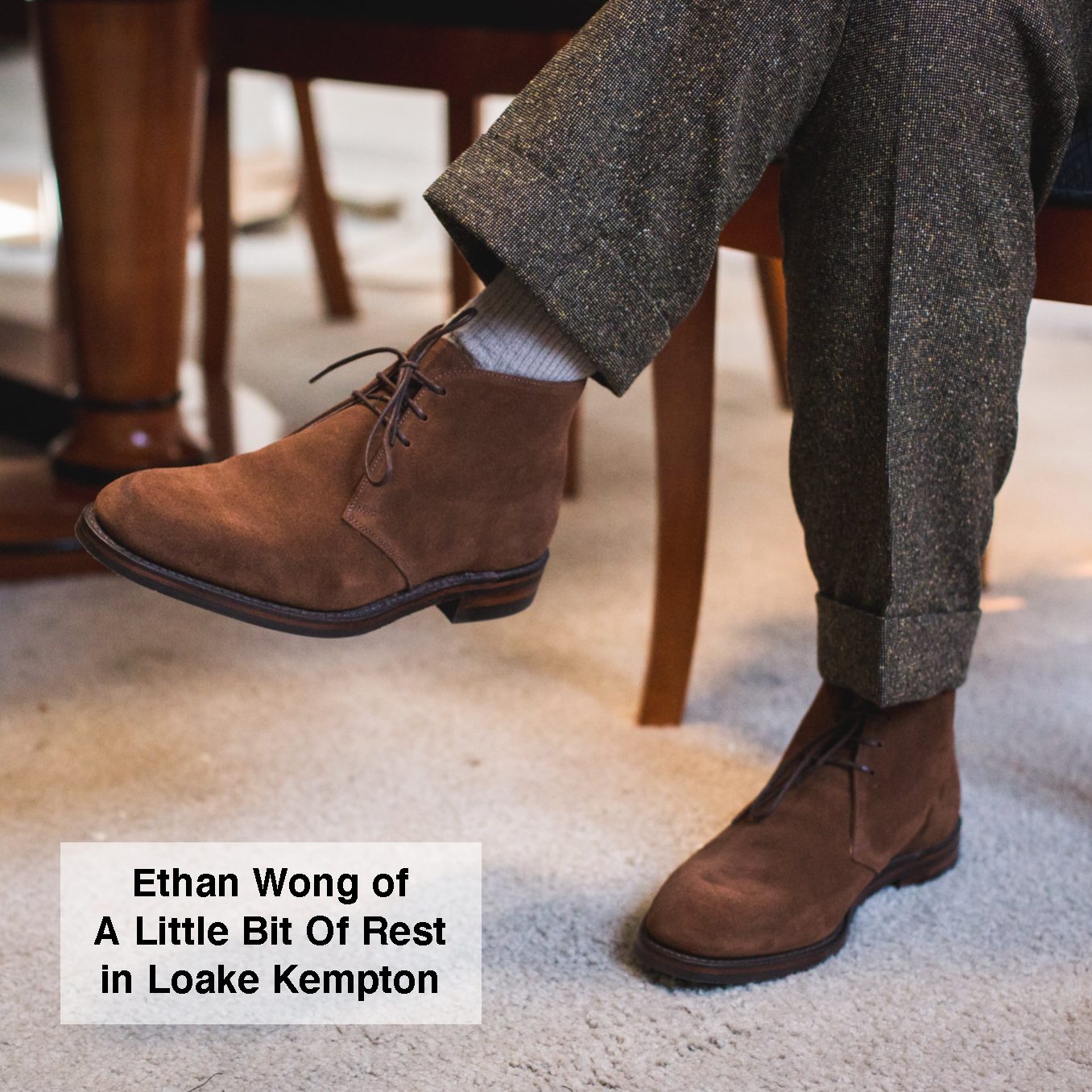
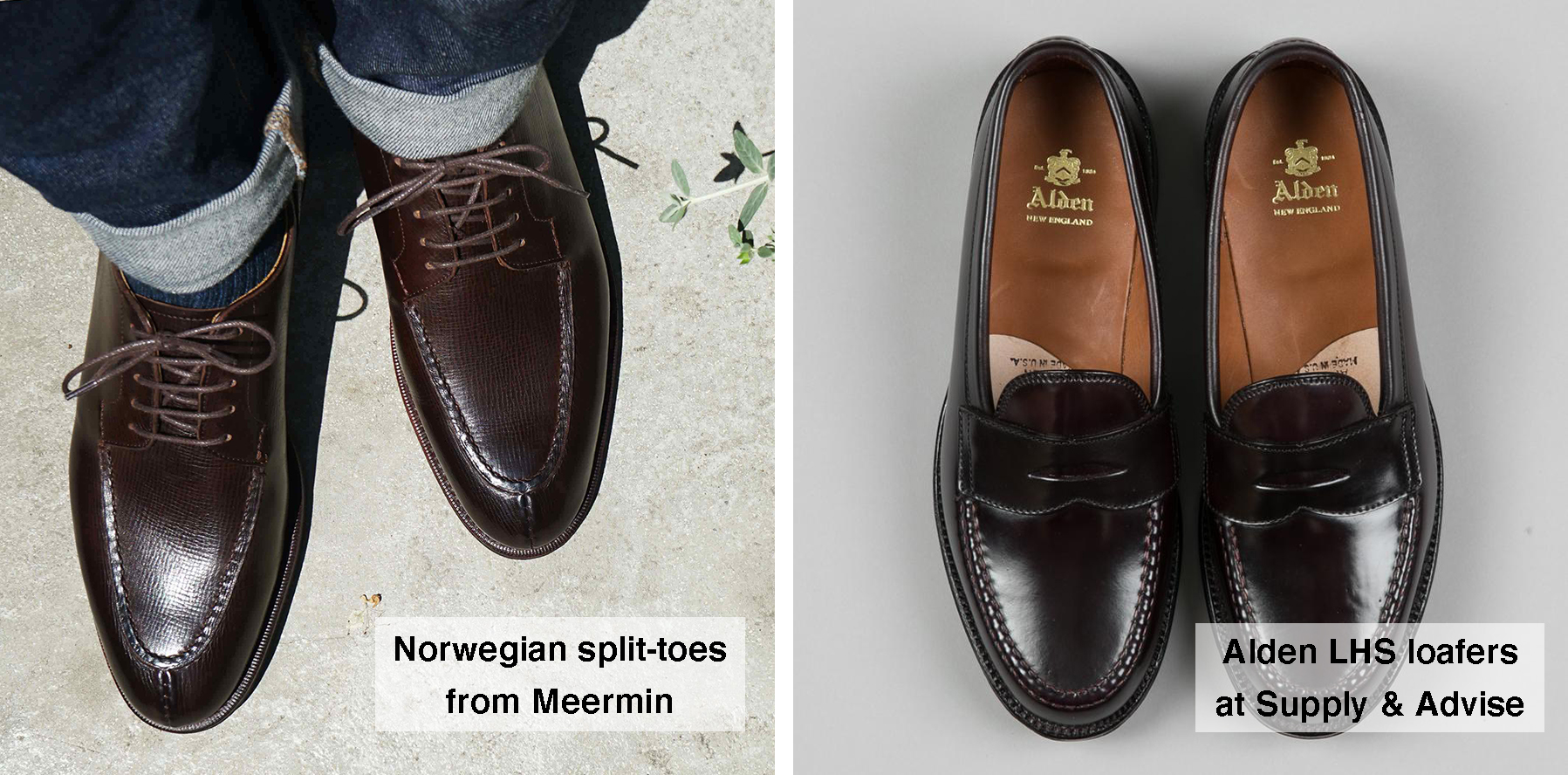
Three Pairs of Shoes
You should always give your shoes a day of rest between each wearing. Sweat tends to collect inside your shoes, and with enough flexing, the material can break down like wet cardboard. Additionally, having a few pairs of shoes will allow you to create more cohesive outfits. I recommend starting with three pairs.
No footwear style will do everything, but a pair of suede chukkas will do more than most. This is something you can wear in the fall and winter months with rustic, casual clothes such as Barbour jackets and five-pocket cords. Our friend Graeme in Australia used to wear unlined Alden chukkas in the summertime with olive field jackets (we also like unlined chukkas, but they give less support than lined ones, so beware). You can wear suede chukkas with sport coats and tailored trousers, or more casual ensembles such as slim-straight jeans with a topcoat. I prefer them in brown suede, as the textured material visually breaks up the expanse of leather that sits on top of your foot.
For your second pair of shoes, consider brown derbies if your style leans classic and tailored, penny loafers if you’re preppy or trad, and work boots if you gravitate towards workwear. Among derbies, I like Norwegian split toes because they’re more interesting than plain toes and less common than wingtips. Some guys wear them with jeans, but I think they look more at home with tailored trousers. You can wear these with suits or sport coats.
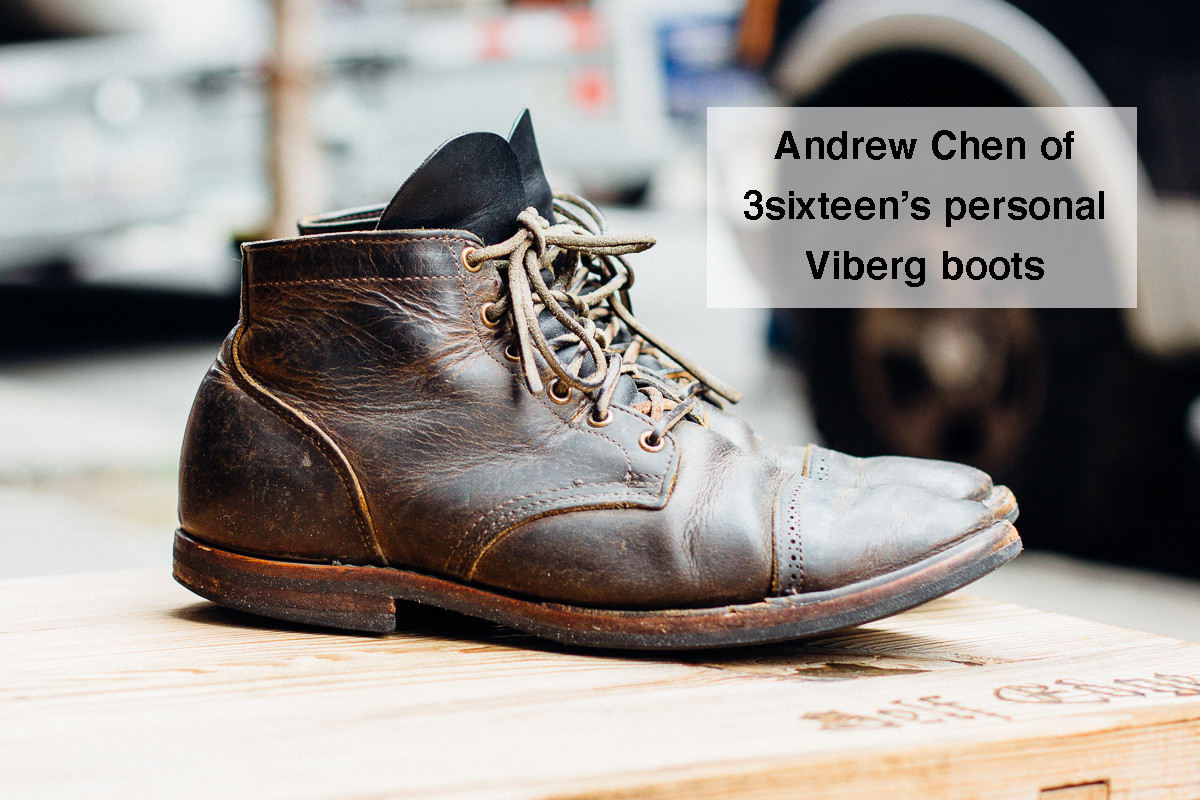
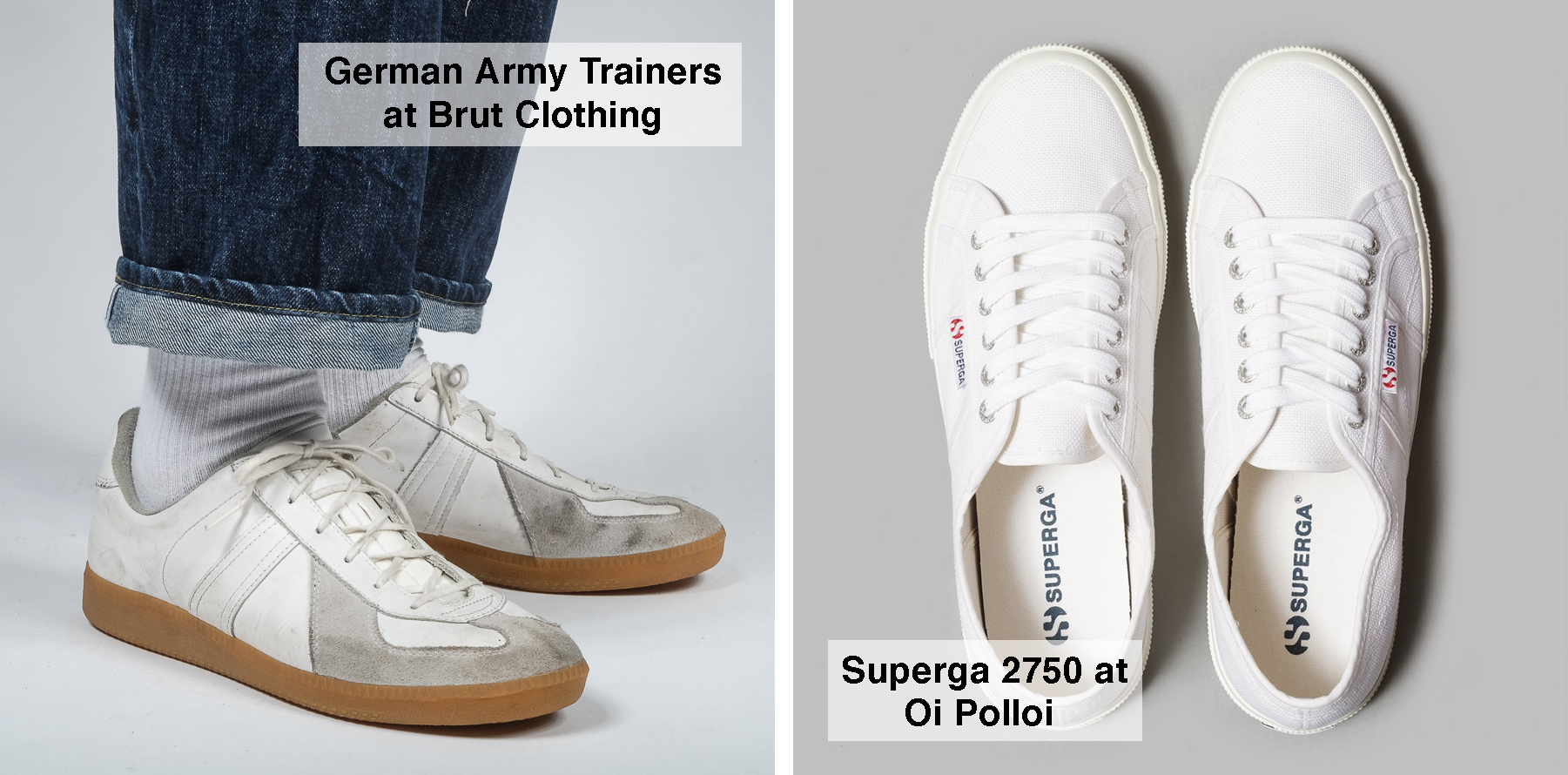
For penny loafers, we have an entire guide on how to choose the right pair. Subtle details such as the last, stitching, and leather type can swing a pair of loafers towards the dressy or more casual side of the spectrum. For your first pair, I recommend sticking with a classic pair of brown penny loafers that’s around the level of formality where you usually dress. Something like Rancourts if you’re primarily in jeans and knockaround chinos, Meermin for tailored trousers and sport coats, and Alden’s LHS if you want something that works across these two worlds.
For work boots, the world is your oyster. Authentic work boots from Red Wing and Wolverine have been staples in the workwear community for decades (note, Red Wings can be tough to break in). If you have a bit more money to spend, Viberg’s service boots have a certain look and shape that allows them to be worn with authentic repro workwear and even some streetwear.
Finally, most guys can use a pair of sneakers. You don’t have to go high-end here. A pair of all-white Supergas, Chuck Taylors, or Vans can work with many classic wardrobes. German Army Trainers go well with everything from Rugged Ivy to contemporary lines such as Margiela. For guys who like the look of Common Projects, but don’t want to spend all that money, Gustin makes a great alternative.
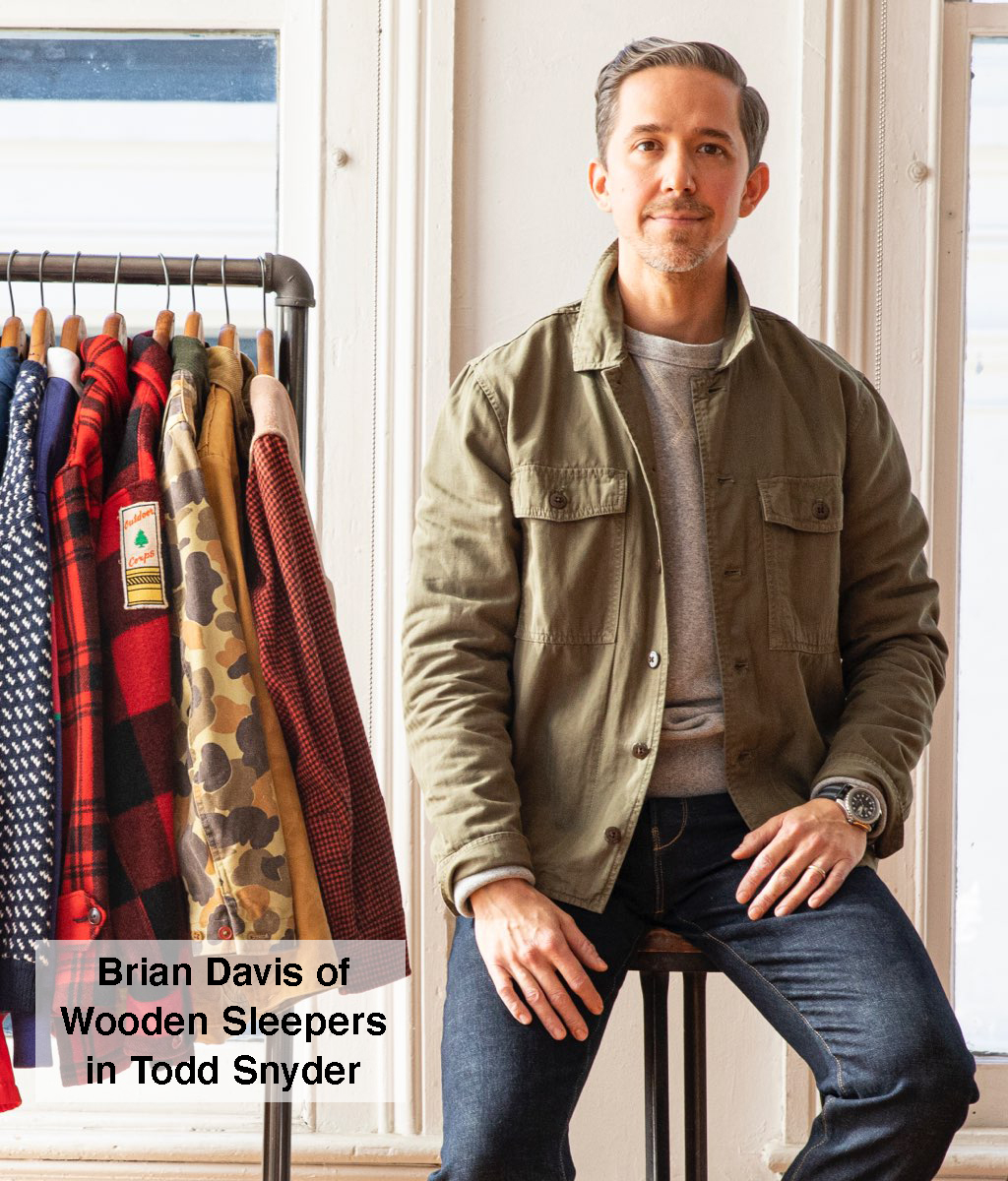
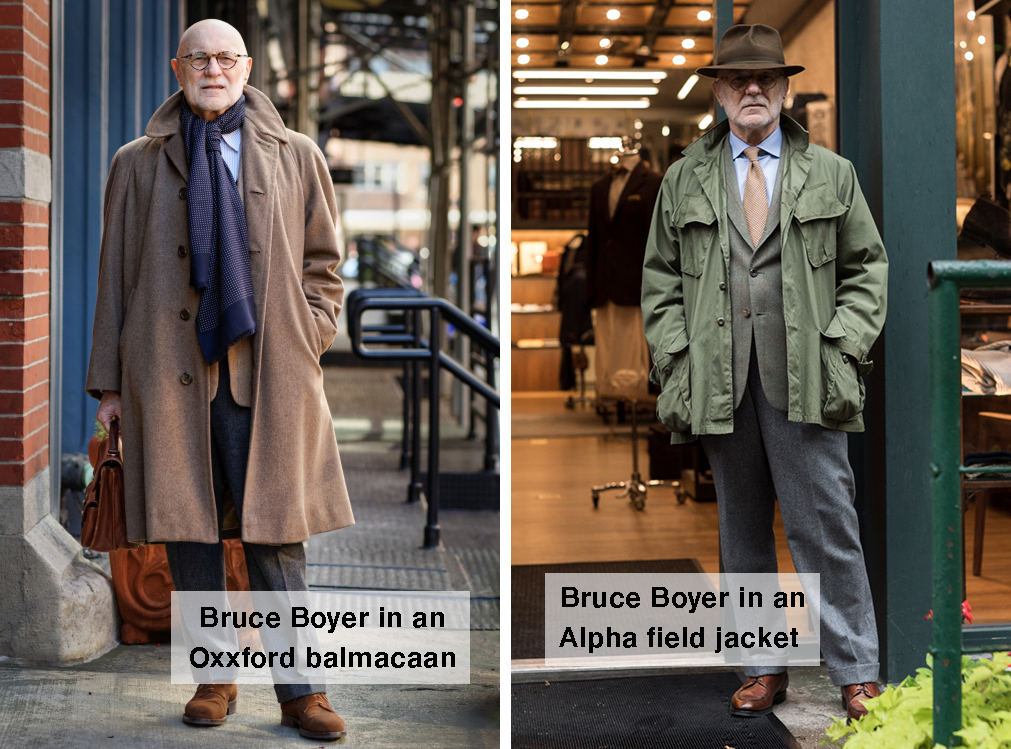
Three Casual Jackets
A good jacket or coat is both the centerpiece and finishing touch on an outfit. Without one, an outfit can often look dull, sometimes even bordering on business casual. However, it’s hard to make blanket recommendations for outerwear (even more so than the other categories). Few jackets are so bland that they work for everyone — and when they do, they also don’t look very good. But for the point of discussion, I’ll recommend three: an olive field jacket for summer, a wool topcoat for winter, and a third jacket that allows you to play around with your casual wardrobe (e.g., denim trucker jackets, chore coats, peacoats, leather jackets, waxed Barbours, and others can be wonderful additions).
You can wear an olive field jacket in the spring and summer months with jeans, chinos, casual button-up shirts, and even t-shirts. When the weather gets colder in autumn, an olive field jacket can be layered over your gray cotton sweatshirt for warmth. For winter, a heavy topcoat will give you some of the advantages of tailored clothing without the formality (although, the downside is that you are to take off the coat when indoors, so the effect is only for when you’re outside). Lightweight topcoats do well in temperatures ranging in the 50s and 60s; heavier overcoats are better for temps below. These coats usually look better when they’re layered over a thick knit, so take that into consideration.
For your third jacket, consider a chore coat or trucker jacket if your style leans rugged, a waxed cotton Barbour Bedale or Beaufort if you like prep, and brands such as Valstar, Private White VC, and Stoffa if you want a casual alternative to sport coats. Dabble here and there to find what’s right for you.
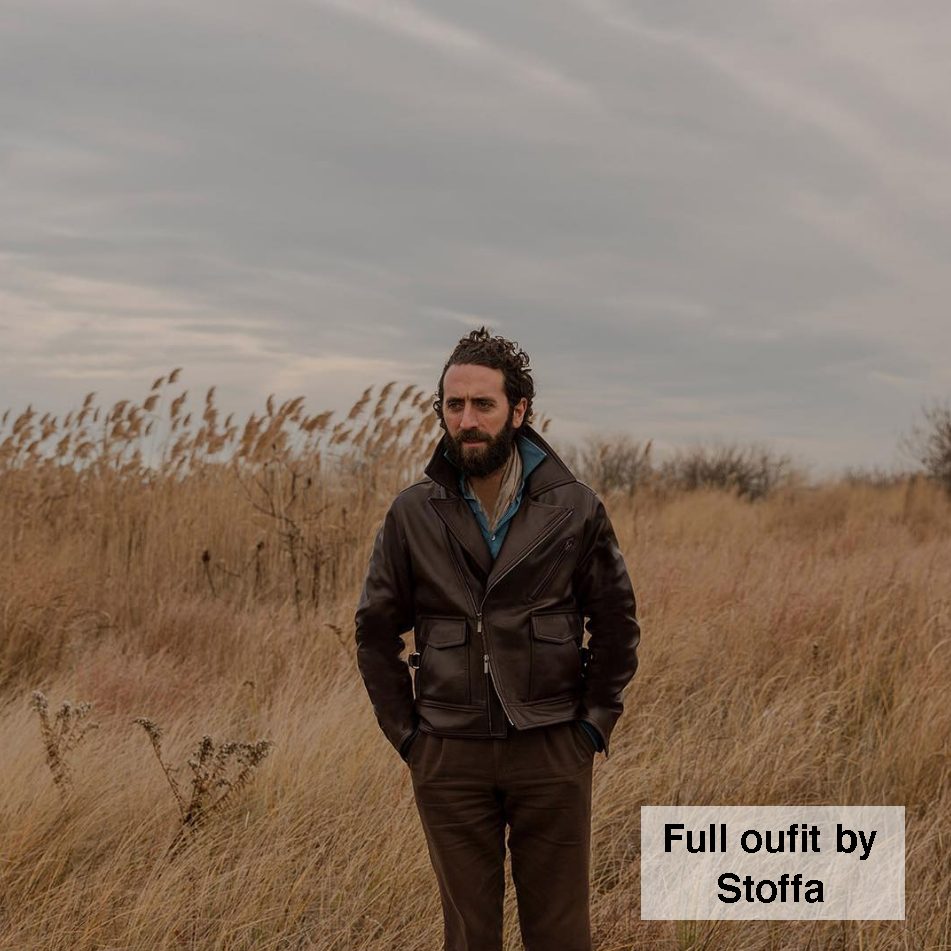
Some Other Suggestions
The springboard wardrobe mentioned above is intended to help you experiment and find your style. It also helps to keep some things in mind as you go through this process.
Focus on Fit and Then Silhouette
When you’re just starting, it’s helpful to learn some basic things about fit, such as knowing when your sleeves are too short, pants too long, and whether a coat doesn’t sit right on your neck. But these things are just the baseline. Even more important than fit is the silhouette, which is the general shape of your outfit when all the details have been taken away.
A good silhouette doesn’t always follow the rules about fit. Sometimes the shoulder seams are dropped or extended; sometimes, the sleeves are intentionally long. By paying attention to the silhouette, you’ll learn how to express yourself more creatively through clothes and find things that flatter your body. We have guides on how to think about silhouette in a traditional tailored outfit and casualwear.
Think About Resale Value
In the beginning, you will cycle in and out of a lot of clothes, as you try different things and realize they don’t work for you. Through this process, you may also end up selling a lot of stuff on sites such as eBay or Grailed (our sponsor LuxeSwap is an eBay consignor who takes all the work out of creating listings).
As such, think about resale value when you buy something. It’s easy to get sucked into the idea that you should always buy the best. The internet is littered with cliches, such as “buy it for life” or “quality is remembered long after price is forgotten.” Filson’s tagline is even “might as well have the best.”
However, for people who are just starting, the sweet spot is often at the lower or middle-tier entry points. Brands such as Meermin, Lof & Tung, and Carmina are not only more affordable than Edward Green, they won’t hurt as much when you resell your purchases and find you only get 25% to 50% of retail value. As you become more secure in your taste — a process that will be informed by many experiments — you will have better footing when buying uber-expensive items.
Be Realistic About Your Forever Wardrobe
Resist the idea that you’re currently building your Forever Wardrobe. The things that stick with you will reveal themselves over time, as they’ll be the things you reach for the most. It’s also possible — and even fine — to cycle through things once in a while, even if you have a strong sense of personal style. Be realistic about where you are in your process.
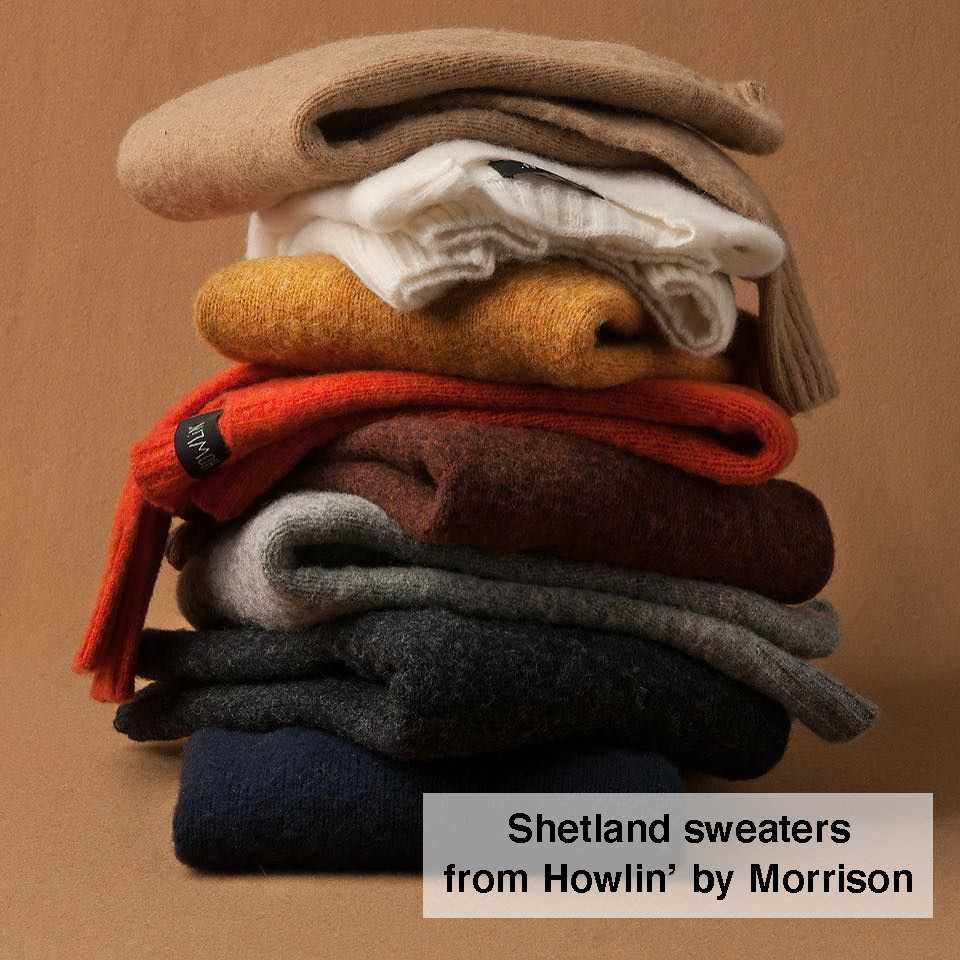
Stay Close to Basic Colors
There’s nothing wrong with buying a citrus-colored sport coat or a wild pair of purple pants down the road. But when you’re just starting, stick to basic colors such as navy, brown, gray, black, and olive. These colors can be easily combined with one another, which means you can do more with a limited wardrobe. Additionally, pay attention to color temperature. Blue can be complementary or clashing, depending on its hue.
Focus on Outfits; Don’t Fetishize Objects
It’s easy to forget this simple lesson, especially if you’re learning about clothes online. As you learn about different technical details — storm welting, canvassing, hand stitching, etc. — you’ll become curious about how these details look and feel in real life. This tension is then only resolved through experience (or shopping). There’s nothing wrong with buying new things to see how you like them, but it’s important to focus on creating stylish outfits. Be aware of how easily you can start to fetishize objects, disconnected from the rest of your wardrobe, as you learn about certain details and see them presented through carefully cropped, beautifully photographed images. When shopping and exploring, use image-heavy sites such as Instagram to see how people wear those items in stylish outfits.
Broaden Your Horizons
When you’re just starting, it can be helpful to learn some basic things about fit, proportion, and general ideas about “quality.” But as you go through this process, it also helps to not be so analytical and sterile about how you view style. Clothing is deeply tied to culture and identity. As you learn about clothes, read about historical fashion movements — the Mods of the 1960s, prep revival of the ‘80s, Armani’s tailoring, punk movements, Japanese avant-garde designers, etc. It also helps to learn about various social movements and artistic scenes, so you can see how people have expressed themselves through clothes.
We’ve long championed the idea that clothing is about language. A good outfit is not about combining random shapes and colors, like how an artist might paint on a blank canvas. Instead, it’s closer to writing a sentence. If you take a more sociological view of style, you’ll not only better appreciate how other people put together outfits, you’ll also have a larger vocabulary through which you can express yourself. Keep an open mind and expose yourself to new things.







